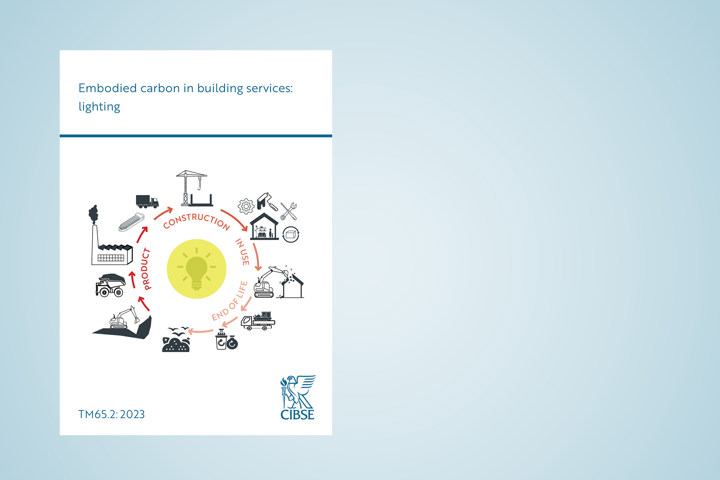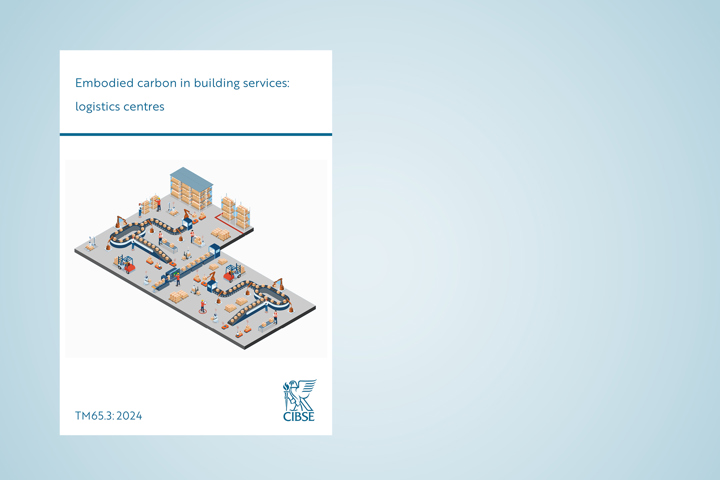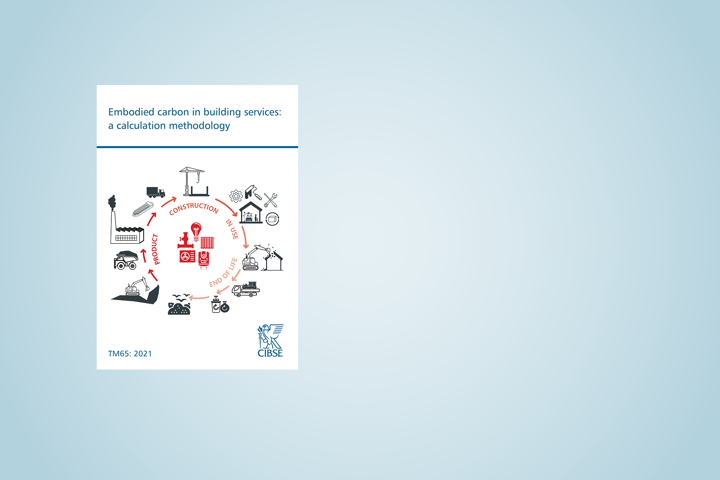
CIBSE's embodied carbon methodology began in 2021:
Embodied carbon in building services: A calculation methodology (CIBSE TM65)
CIBSE TM65 itself is versatile, but UK-specific.
Now, we'd like to make it globally valid and globally consistent. (If you'd like to help, see the FAQ further down).
Embodied carbon in building services: Using the CIBSE TM65 methodology outside the UK (CIBSE TM65LA)
Here's how it would work in Australia and New Zealand...
Embodied carbon in building services: A calculation methodology for Australia and New Zealand (CIBSE TM65ANZ)
Here's how it would work in North America...
Embodied carbon in building services: A calculation methodology for North America (CIBSE TM65NA)
And here's how it would work in United Arab Emirates:
Embodied carbon in building services: a methodology for the UAE (CIBSE TM65UAE)
Because we like to make your job easier, here's a digital tool
(for use in the UK)...
Embodied Carbon Calculator: United Kingdom (beta v1.2)
... and here's one for Australia and New Zealand.
Embodied Carbon Calculator: Australia and New Zealand (beta v1)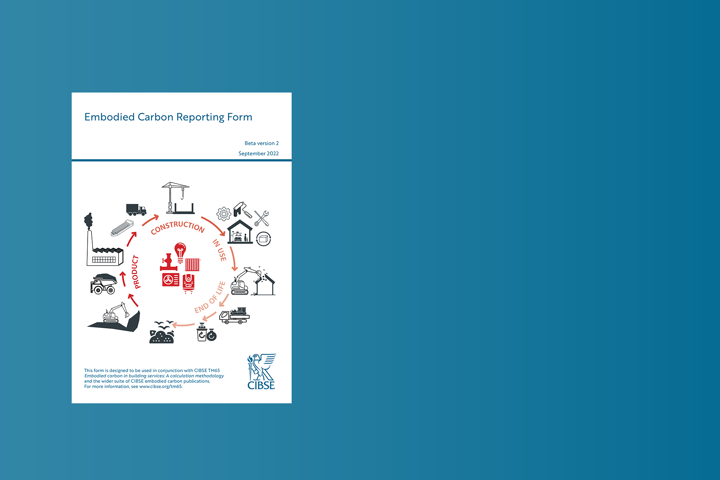
If you'd like to help us gather data
and create rule of thumb guidance, submit one of these:
Embodied Carbon Reporting Form (beta v2)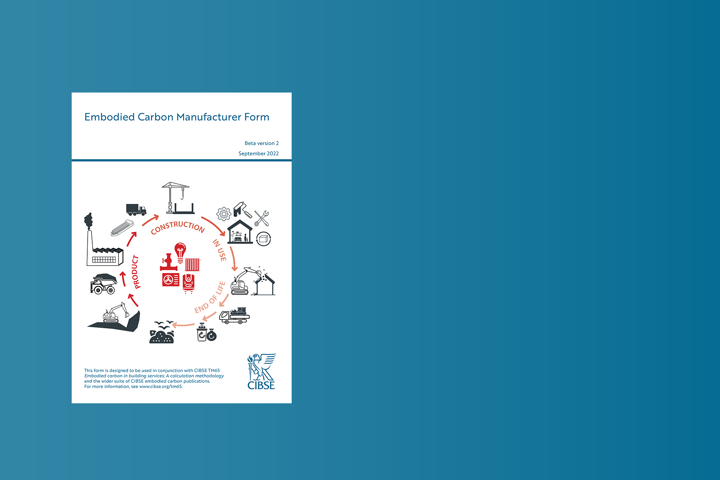
If you'd like us to create an embodied carbon database,
encourage manufacturers to submit one of these:
Embodied Carbon Manufacturer Form (beta v2)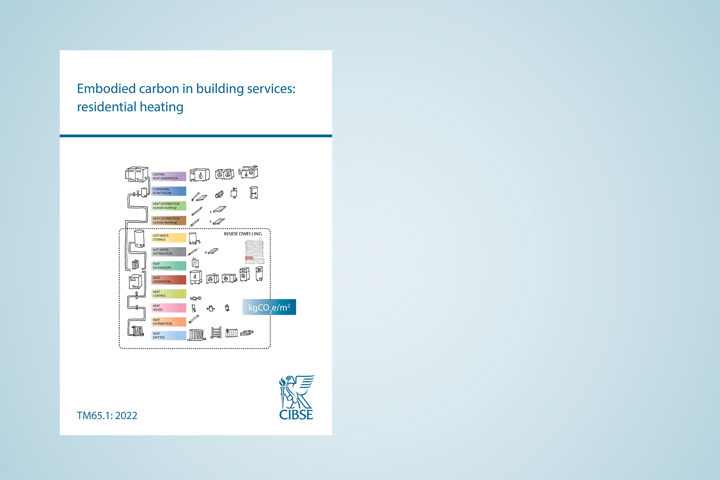
We're also producing system-specific publications,
including this one:
Embodied carbon in building services: Residential heating (CIBSE TM65.1)
Coming soon: a publication to address HVAC in offices.

Embodied Carbon Verification (ECV)
Verification for the CIBSE TM65 methodology
#GrowYourKnowledge
Embodied carbon in building services: A calculation methodology (CIBSE TM65)
#GrowYourKnowledge
Embodied carbon in building services: Residential heating (CIBSE TM65.1)
#GrowYourKnowledge
The CIBSE Embodied Carbon CalculatorIt is not an EPD tool. An EPD is regarded as the best reference when assessing environmental impacts, our tool only looks at embodied carbon in a simplified and conservative way when no EPDs are available. However the information needed to carry out a TM65 calculations will required to create an EPD.
There are non-editable cells in the tool; this is to make sure that it always has the same fields and format, as we are looking to machine read CIBSE TM65 responses into a larger database to do further carbon analysis on building services products.
This also answers your second point about refrigerants. While we recognise that not all products contain refrigerant, it is the biggest contributor to climate change gases in our industry, so we need to look at it carefully. We have built in options for you to respond to these cells. Responding in this way will keep the format consistent for us to read data into our database (if you agree that we can do this) and removes refrigerant from the calculation. We are also working on updating the tool slightly to include more materials that are commonly used in the manufacture of luminaires. This has been done in consultation with the SLL and several manufacturers, so hopefully this will help you also.
If you have information per sub-element, we would encourage you to do calculations per sub-element. TM65 is a method, we provide assumptions to help people when they have no info, if you have the info, you should input it in a accurate way.
CIBSE TM65 is not a life cycle assessment; it is an embodied carbon assessment, meaning a life cycle assessment that only looks at one impact indicator (carbon/climate change) across certain life cycle stages. For a whole life carbon assessment, you need to add in operational carbon.
You can add materials to the replacement list and apply a 0% value.
The recycled content column is not actually doing anything right now. The reason for this is that there is insufficient data on embodied carbon coefficient factor per recycling rate. We are working on gathering this data and a satisfactory method of applying it, but this is not straightforward, as there are many ways in which materials can be recycled, each of which has different carbon intensities. We decided however to include the information in the form as there is limited data available on this and we should learn more about how our building services products are made of recycled material.
The column should probably not be adding up the percentages, that is not providing you with useful information
While we encourage manufacturers to use our methodology in their self-declarations, it is important to ensure that it is clear to the end user that the inputs used and outputs generated in the self-declarations have not been assessed, endorsed or verified by CIBSE.
Please also send any Manufacturer’s Forms or Reporting Forms back to us – we would like to develop an embodied carbon database, in order to be more helpful to the industry.
CIBSE TM65 is not an EPD. CIBSE intends to create a database of generic TM65 datapoints that could be used for early design assessment. For EPDs, suggest checking ECO platform, EC3 or national databases like the French one INIES (they have EPDs for MEP products, called PEP).
If no information is provided by the manufacturer, CIBSE Guide M which references typical service life can be used.
Sometimes users only know the energy use for the entire factory and not specifically for the product we are doing the calculation for. When that is the case, we do a ratio by tonnage, comparing total tonnage produced at the factory (cell C83) vs total tonnage of the product (cell D83), to understand how much of the energy is used to manufacture one product. If the user knows the energy used to produced Z product, then C83 and D83 should have the same input Zxweight kg/1000. We are looking to clarify the process on the online calculator tool.
CIBSE Certification has worked with selected manufacturers to develop embodied carbon verification (ECV) an innovative verification scheme based on the CIBSE TM65 methodology that issued its first certificates in July 2024, and has
launched a register of verified products - view now
The number of scheme participants will be expanded from August and if you would like to take part in the scheme, or have any questions, then feel free to make contact via [email protected]
Yes, the Embodied Carbon Verification (ECV) scheme covers all current variations e.g. CIBSE TM65LA, CIBSE TM65UAE, CIBSE TM65ANZ, CIBSE TM65NA, CIBSE TM65.1, CIBSE TM65.2, CIBSE TM65.3, and will also cover future variations CIBSE TM65.x.
Use the ones you think are most relevant and make sure to disclose the source and year in the reporting form.
It is tricky to complete for a product range. It would need to be completed for each member of that range. For products that are measured by length, area or volume (e.g. cable, paint or concrete) can have a Unit of m, m2 or m3, then the size can be either 1m/m2/m3 or the size that is delivered to site. For cable this may be the length of cable on a drum. The weight will be related to the quoted length.
We suggest to use the value for iron as a reasonable substitute unless you have access to the actual value (if so, make sure to disclose the source in the reporting form).
CIBSE Certification has worked with selected manufacturers to develop embodied carbon verification (ECV) an innovative verification scheme based on the CIBSE TM65 methodology that issued its first certificates in July 2024, and and has
launched a register of verified products - view now.
The number of scheme participants has expanded steadily from August and if you would like to take part in the scheme, or have any questions, then feel free to make contact via [email protected]
CIBSE TM65 methodology can be used for products that are composed of different parts (e.g. a heat pump) and which don’t have an EPD already available.
The methodology is however best suited for products made from metals and plastic with complex supply chain as it was originally written for building services equipment. For products which are not building services equipment, it is very likely that the user will need to work out bespoke assumptions more custom to the products. In any case, CIBSE TM65 only provides a conservative estimate and does not provide 100% accurate results.
Yes. In terms of where to put it in the taxonomy, we have a “other category” but in any case it doesn’t influence the results.
That is the tricky part. Looking at the ICE database, searching for industry reports or looking into EcoInvent (a license is needed however) are what we would recommend. If nothing can be found, the closest material option should be selected (e.g. zinc) and it should be noted in the reporting form. The online calculator tool that is being built currently will allow other materials to be inputted as we are aware that our assumption list is not exhaustive.
The vast majority of the data in the CIBSE TM65 tool is from the ICE carbon database, you can download it for free here. We do have some other sources, but these are less reliable and are UK focussed, so may not be providing data that would be applicable in Australia. We have also found that the power grid coefficients in Australia are different to Europe and also travel distances for component supplies is also greater in the Southern Hemisphere. As such, we have been working on an adaptation of the tool and CIBSE TM65 guidance to deal with these variations specifically for the Australia and New Zealand markets, which is available on our website.
We are still collating CIBSE TM65 data and it is currently rather widely dispersed, so we just don’t know right now, but that will be rectified when we get the database up and running.
The AIA value is probably for virgin material. We use the University of Bath ICE data, which includes 30% recycled material, hence the lower value. Our values are from the peer reviewed study by the University of Bath, so we know that they are of the correct magnitude, even if they are not the exact values for your supplier.
We would recommend that a manufacturer completes a manufacturer form and reporting form, and if required have the self-declaration assessed by a reputable Certification Body. Please contact CIBSE Certification to discuss your requirements email [email protected]
CIBSE Certification has worked with selected manufacturers to develop embodied carbon verification (ECV) an innovative verification scheme based on the CIBSE TM65 methodology that issued its first certificates in July 2024, and and has
launched a register of verified products - view now
The number of scheme participants has expanded steadily from August and if you would like to take part in the scheme, or have any questions, then feel free to make contact via [email protected]
Please ensure that you are using the ANZ version of the tool. This refines values and assumptions for your part of the world. The values for each material are the same for all manufacturers, so replacing the value for aluminium with a bespoke value will invalidate the calculation. To use specific values for each material would require an Environmental Product Declaration (EPD) to verify that the values quoted by your suppliers are accurate.
The input for ANZ is the same as for elsewhere, so the existing form does all you need it to. It is in the calculation tool that there are differences.
The process involves submitting the manufacturer reporting forms, a completed CIBSE TM65 report with calculations, and an overview of your product family to CIBSE Certification at [email protected]. They will review the submission and then contact you to confirm the process and next steps.
An addendum can be developed by a local group, institution or professional body (we will refer to this body as the ‘proposing institution’ below).
The roles coordinated by the proposing institution may be carried out in a voluntary capacity, may become a part of an existing role, or may be paid. Covering necessary costs will be the responsibility of the proposing institution. To discuss specifics, email [email protected]
The proposing institution should discuss this with CIBSE. The local addendum must be read in conjunction with Embodied carbon in building services: A calculation methodology (CIBSE TM65), which can be purchased at www.cibse.org/knowledge, but may also be made available for sale by the proposing institution.
CIBSE Training offers sessions on CIBSE TM65, but training is not mandatory.
Some roles should be coordinated by the proposing institution:
- Working Group members (individuals representing a mix of disciplines) to discuss and agree local assumptions
- Chair (and possibly vice-chair) of the working group, who will liaise with CIBSE and coordinate the working group workshops
- Author or authors of the addendum, to develop content for the working group sessions, liaise with the CIBSE Embodied Carbon Steering Group and liaise with the CIBSE Knowledge team during the peer review, editing and production phase.
Some roles will be coordinated by CIBSE:
- CIBSE Embodied Carbon Steering Group
- CIBSE Knowledge Project Manager
- CIBSE Knowledge (editor, typesetter)
This will vary according to locality, so is for the proposing institution to decide. Previous experience suggests that a minimum of four working group sessions will be required, which would equate to around 10-14 hours of time from each working group member. However, this will increase if a large number of stakeholders are involved or if the situation is complex.
A possible plan for a straightforward locality might look like this:
- Prepare for session one: read Embodied carbon in building services: A calculation methodology (CIBSE TM65) and Embodied carbon in building services: Using the CIBSE TM65 methodology outside the UK (TM65LA) (roughly one hour)
-
- Session 1 (90 minutes): What is the CIBSE TM65 methodology?
- Preparation work to develop the assumptions (one to two hours)
-
- Session 2 (90 minutes): What assumptions need to change for our locality?
- Preparation work to further develop the assumptions (one to two hours)
-
- Session 3 (90 minutes): Review and agree revised assumptions
- Review and comment the addendum draft (one to two hours)
-
- Session 4 (90 minutes): Presentation of the final output.
All manufacturer forms and reporting forms must be emailed to [email protected]. This information will be used by CIBSE to develop a generic database of building services equipment.
If you would like to collaborate on the development of a database, please contact CIBSE.
CIBSE Certification has worked with selected manufacturers to develop embodied carbon verification (ECV), an innovative verification scheme based on the CIBSE TM65 methodology that issued its first certificates in July 2024, and and has
launched a register of verified products - view now
The number of scheme participants has expanded steadily since August, and if you would like to take part in the scheme, or have any questions, then feel free to make contact via [email protected]
The steps below are fully explained within Embodied carbon in building services: using the CIBSE TM65 methodology outside the UK. Information not contained within the publication is highlighted in bold below.
1. Go/ No go
Define the locality; assess the need for an addendum; assess the suitability of the TM65 methodology in the locality.
2. Contact CIBSE
Email [email protected] and explain your answers to the questions in step 1. CIBSE will advise whether or not there is an addendum underway in your locality or a locality nearby, and will put you in touch with the CIBSE Embodied Carbon Steering Group, which will assess your answers to Step 1.
3. Set up a working group in the defined locality
4. Clarify how the CIBSE TM65 methodology should be adapted
5. Agree material embodied carbon coefficients
6. Agree on assumptions specific to the locality
7. Conduct a sensitivity analysis
8. Draft the addendum
- Ensure that the draft reflects a consensus of working group views.
- Agree a schedule of progress meetings with CIBSE Knowledge; meetings once a fortnight usually work very well, but this is up to you to decide along with the Knowledge team.
- Submit completed drafts to [email protected] to be reviewed by the CIBSE Embodied Carbon Steering Group. The steering group will work collaboratively with your working group/drafting team and may suggest some revisions to ensure alignment with CIBSE TM65.
- Once the drafting team and steering group have created a final draft, submit it to [email protected] for peer review. The Knowledge team will then arrange a peer review of at least three objective reviewers, in line with CIBSE’s quality assurance process. Your working group/ drafting team is welcome to make suggestions as to who may be appropriate peer reviewers, but must then ensure that these individuals are not involved with authoring. Once the review is complete – normally in four to eight weeks – CIBSE Knowledge will return the draft to you for incorporation of peer review comments.
- Please note that authors don't need to incorporate all peer review comments; however, if they choose not to incorporate certain comments, they must be able to justify their reasoning.
- Submit the draft to [email protected] for editing, layout and publication.
9. Implement the CIBSE TM65 methodology locally
Once the addendum is published, all relevant groups and organisations should be made aware of the addendum and should be encouraged to understand the benefits of a consistent approach to generating data.
- The CIBSE Marketing team will liaise with you about promoting the guidance in your locality, and help you to encourage those who use the guidance to submit embodied carbon manufacturer forms and reporting forms, and embodied carbon data, to CIBSE.
- Work with CIBSE to collect and make use of the resulting data.
Sign up to the CIBSE Knowledge Newsletter
Be the first to hear about the new knowledge launched:
- Guides, codes, application manuals, technical memoranda, etc.
- Digital tools
- Webinars

The CIBSE embodied carbon methodology is the result of a partnership between CIBSE Research and Introba, a deep green engineering and consulting firm located across Australia, Europe, and North America.

